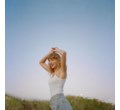TRENDING
Must List
How the Stanley cup craze actually does more harm than good

If you've scrolled TikTok or Instagram at any time in the last few months, you've probably heard of the Stanley cup. These insulated tumblers have been going viral as the new must-have water bottle (complete with videos of people literally running toward the limited edition displays at Target).
@victoria_robino_26 #fyp #fypシ゚viral #target #targetfinds #stanleycup #stanley #stanleytarget #valentinesday #stanleyvalentinesday ♬ original sound - Victoria Robino
Other brands are even dropping new accessories that can be attached to the cup, including snack trays, a mini backpack and even a wearable strap to carry the cup like a purse.
@heysweetkay the teddy bear straw toppers 🤭✨ #amazonfinds #stanleytumbler #stanleyquencher #stanleyaccessories ♬ original sound - Katie 🎀 Amazon Finds
But while these super cute cups are all the rage rn (and you're feeling major pressure to hit "add to cart"), the viral nature of these tumblers is actually damaging our environment and contributing to overconsumption (yikes).
If you're anything like the rest of us, your FYP probably consists of influencers flaunting the latest and greatest products that everyone *needs* to buy (sometimes including the same product in every single color or style). Not to mention the clothing hauls, closet cleanouts and kitchen restocks.
The sad fact is that a ton of these products eventually get thrown into mass garbage piles. Because, newsflash, influencers often buy products (or receive free PR) simply to show off on the 'gram—not to actually use.
Like any other social media craze, all of this Stanley hype is ultimately temporary. Remember when Hydroflask rose to fame in 2019 and every girl seemed to own every color? Yeah—we're not sure what happened to those bottles either.
Even the brand Owala has become a TikTok staple, and their monthly "color drops" just encourage buyers to own something that is limited edition (same with Stanley and their holiday colors). Definitely *not* sustainable or smart shopping, if you ask us.
We'll give Stanley this one: Reusable water bottles *do* help reduce plastic waste (bc plastic water bottles = out for 2024), and Stanley is committed to using upcycled and recycled materials in their bottles. However, the mass consumerism that results from their extreme popularity is more harmful to our environment long-term.
So unless you can see yourself using your Stanley 10 years down the road (which, let's be honest, these babies will probably be *so* out of style by summer break), best to leave it in your cart—and fill up another trusty cup you already have.
One water bottle is plenty for all your drinking needs—trust us!
Looking to be more environmentally friendly in 2024? Check these out:
🌎 5 fashion rules to live by if you want to dress sustainably
🌎 Rebrand your wardrobe with these eco-friendly and cost-effective tips
🌎 The cutest sustainable swaps for your next Everything Shower
Top and slider image: @stanley_brand

 become a contributor
become a contributor



















